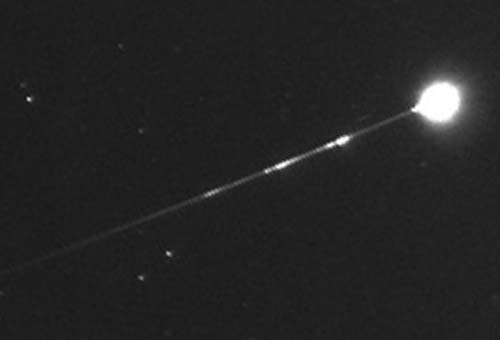
The Earth has always been bombarded with rocks from space. It’s true to say though that there were more rocks flying around the Solar System during earlier periods of its history.
A team of researchers have been studying a meteorite impact from 3.26 billion years ago.
They have calculated this rock was 200 times bigger than the one that wiped out the dinosaurs.
The event would have triggered tsunamis mixing up the oceans and flushing debris from the land. The newly available organic material allowed organisms to thrive.
Meteorite impacts are a common event and its not unusual to see these rocks from space whizzing through the atmosphere. Giant meteorite impacts have become an important part of Earth’s geological history.
The impacts release colossal amounts of energy that can destroy life, create wildfires, tsunamis and eject dust into the atmosphere.
The Chicxulub impact around 66 million years ago is perhaps one of the most well known impacts and wiped out the dinosaurs.
The study of these interplanetary wanderers is imperative as we strive to protect ourselves from potential impactors that pose a threat to human life.
Impacts like these have had a massive affect on the development of Earth and its suitability for life. Geological studies of rocks from the Archean Eon have revealed 16 major impacts with impactors measuring at least 10km in diameter.
At the time of impact the effects can be devastating but over time, their can be benefits to life although it’s not well understood. In a paper published in Earth, Atmospheric and Planetary Sciences the team led by Nadja Drabon from Harvard University explore rocks from an event 3.26 billion years ago.
Known as the S2 event, the impactor is believed to be a carbonaceous chondrite between 37 to 58 km in diameter. It is thought to have exploded over South Africa with debris landing in the ocean causing giant tsunamis. The impact mixed up iron(II) rich deep waters with the iron(II) poor shallower waters.
It will have also caused the waters to heat leading to partial evaporation of surface water with a temporary increase in erosion around coastal areas.
Perhaps one of the most valuable effects of the impact was the injection of phosphorus into the atmosphere with a positive impact on the Earth’s habitability for life. Study of the layers of rock above the layer caused by the S2 event reveals an increased amount of nutrients and iron which helped microbial life to thrive.
The study has helped to build a clearer understanding of how giant impacts can aid the development of life. It does of course depend on the size and type, material and the conditions of the atmosphere before the event.
The S2 event seems to have quite a mixed effect on early life, in particular marine life. Overall some forms of life were positively impacted while others seemed to have experienced challenges.
Marine life that relies upon sunlight to survive (the phototrophs) were effected by the darkness while those living at lower depths were less influenced.
The detrimental effects of the atmosphere would likely only have been short lived lasting perhaps just a few years before recovering quickly causing only a temporary impact to marine life. But the injection of phosphorous in the atmosphere would have had far more long term beneficial effects to life.
Written by Mark Thompson/Universe Today.



